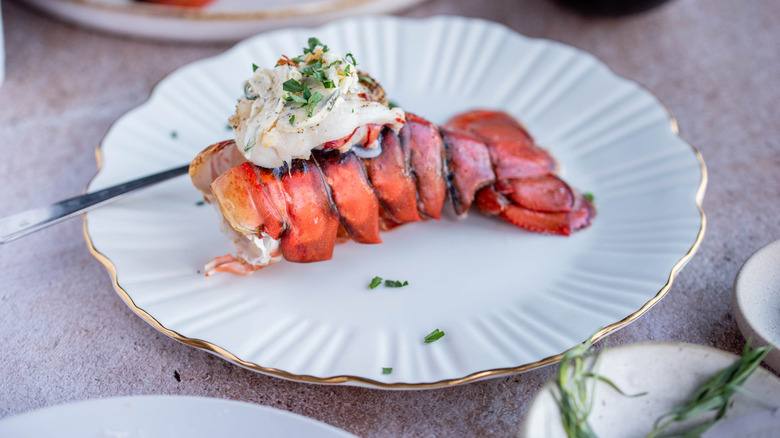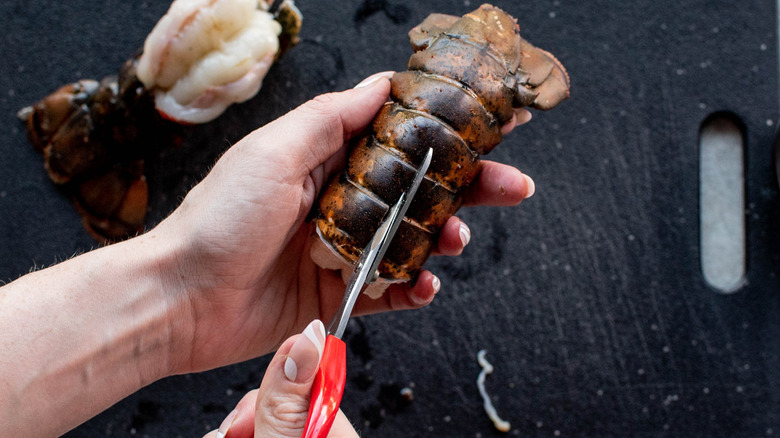How, Exactly, Do You Butterfly A Lobster Tail?
If you have lobster tails and you're wondering how to cook them (a good problem to have, we must say), you may be leaning toward an easier option such as boiling or steaming; Mashed recipe developer Michelle McGlinn favors broiling instead. While more cautious cooks avoid direct high heat for delicate, low-fat meats such as lobster, McGlinn says of her broiled lobster tails recipe, this method "is great when you want to emphasize the flavor of the meat and your seasonings and serve [the lobster] in-shell."
Of course, if you want to broil lobster, you'll need to detach the shell, at least partially, in order for the meat to cook. McGlinn favors the commonly used butterfly method, which can also be used for shrimp. In the case of a lobster tail, cut the top of the shell (the hard part) open from top to bottom, leaving it attached at the tail fin and intact beneath. Pull the top portion of the meat up and out of the shell, then remove any veins, dirt, or other potentially icky stuff from the visible area. McGlinn admits that "it takes some practice to butterfly a lobster tail" but softens the blow with a reassuring disclaimer that the process is "very hard to mess up."
Butterflying isn't the only method you can use
Butterflying is just one of several ways lobster can be prepared for broiling. One of these, called piggybacking, starts in a similar fashion to the technique described above, only you pull all of the tail meat out of the shell (being careful not to detach it at the fin end) and let it sit up on top. Squeeze the shell closed as best you can beneath the meat, so it gives the impression of two tails, one atop the other. Piggybacking, despite its inelegant name, may be considered the fanciest lobster tail presentation.
You can also cut the thinner underside of the lobster shell away from the tail, exposing the meat inside the upper shell — this is called fan-cutting as the fan-shaped tail fin remains intact. Yet another method involves simply splitting the tail in two lengthwise, cutting through the upper shell, lower shell, tail fin, and all. Finally, if you don't want to bother with the shells, you can always just cut and peel away the undershell and carefully crack the hard outer shell so you can remove the tail meat more or less intact.
However you cut and cook your lobster tails, there's no need to throw away the shells when the meat is gone; they can be boiled to make a tasty broth for use in soups and sauces. Even when their last drop of flavor is spent, lobster shells can be composted for use as fertilizer.

